istari6
Posts: 56
Joined: 12/12/2013
Status: offline

|
I'm in software development myself (medical), so I fully understand a developer's desire to hear something positive once in awhile about the current product. Particularly when OTS is doing such yeoman work in fielding the multiple critiques and ideas for future versions :).
MAJOR
#1. Operational AI. The Soviets move incredibly fast, while maintaining mass and showing flexibility in response to unexpected situations. A great example of this occurred when I was slow repositioning a Bradley company in the opening turns of battle. A T-80 company+ came rolling over the hills at full speed (arriving much sooner than I expected) and caught them in transition, practically annihilating them. I could see the rest of the T-80 battalion massing behind as they continued down the road past my flaming wrecks. I scrambled to put M1s in a blocking position further down the autobahn. The M1s opened up and caught that lead T-80 company in an ambush, devastating them. I smiled waiting for the rest of the battalion to keep rolling into my killing zone. Instead, the rest of the T-80s stopped just out of range, paused, and then took a bypass route SW avoiding my ambush entirely. My jaw dropped. After finally finishing all of the standalone scenarios, I now have a healthy fear of the velocity, mass and agility of the Soviet Army in full attack mode :).
#2. Campaign Design - the overarching plot and the Google Earth plug-in are fantastic. Many fiction authors used Sir John Hackett’s “The Third World War” as their backdrop (see "Team Yankee", "The Chieftains", etc) and called it a day, focusing their attention on creating specific tactical battles. Instead, the OTS team took the time to construct a plausible 1989 storyline putting NATO in a worst-case scenario, then showing how the various battles all interconnected at the operational/strategic level as part of Red Storm. I really enjoyed “following the story” as I moved from scenario to scenario in chronological order and uncovered what was happening to NATO, and it created an extra level of drama when I was fighting "back to the wall" scenarios like "12 Bravo", "Test of Wills" and "Thor's Hammer".
3. Scenario Design - the main impression is tension, tension, tension. Every scenario I played was a challenge, and the pressure was unrelenting. Mistakes were punished, sometimes brutally. Only a few times did I feel like I mastered the enemy early and then proceeded to beat him up at my leisure. Several times I suffered an outright Decisive Defeat in my first play through (hello Pied Piper!) and saw what Soviet doctrine looked like when it worked as designed. The scenarios were always well-balanced, challenging and yet still managed to show the full range of the game engine. I never felt like I was fighting the same battle twice.
3. OOB UI - others have already commented on this, but wanted to call out the ease of cross-attachments and the way in which out-of-command units are highlighted in red. Makes it very easy to understand what's happening with the command net as units are fragmented under the stresses of battle, and I've enjoyed the process of creating customized units via cross-attachments during the setup phase to meet specific tactical challenges. I'd always heard this kind of cross-attachment was a strength of NATO's (the US and UK in particular), and it was gratifying to have a chance to use it in practice (and suffer the consequences when I didn't pay attention to the command relationships).
4. Readiness - I appreciate the way this single variable responds to the various stresses and strains of the battlefield. It's an elegant mechanic that shows how long road marches in tactical formation wear down a unit even without any enemy contact (I'm looking at you, Challenger I platoons). Or the way in which even harassing artillery fire gradually undermines the combat effectiveness of a force. Or the way in which Readiness plunges after a prolonged period of sustained firefights. Units just get "fought out" in an organic way that feels right, and really limits the NATO commander's ability to rely on a few wunderwaffen like other games.
5. Tactical AI - while there are specific "corner cases" where the AI will be further improved for future versions, overall the tactical responses of individual units really "make sense". My units will pull back even when on Hold orders when they've reached a certain level. The way they'll pull back and find cover to Resupply on their own. The way in which units pause and sidestep when meeting unexpected obstacles. They show enough initiative to add realistic self-preservation, without having so much they're constantly breaking the overall plan.
6. Meaningful Options - as Sid Meier famously said, game design is about "giving the player meaningful choices". The options for movement, artillery and other tactical choices are few but meaningful. Hasty Movement and Deliberate Movement have real impacts on gameplay. Same with Harassing versus Neutralizing. Yet I don't feel burdened by lots of choices that are there just because it "adds realism", without really affecting the tactical choices.
THE LITTLE THINGS
1. Thermals Modeling - very cool details like the way that the morning haze affects thermals, or the variability of sighting under different conditions of rain (seen most vividly in "Test of Wills". Learned a few things about thermal sights here!
2. Colored LOS Overlay - I appreciate the way that LOS tool is colored by ease of sighting into the specific hex. It's a little touch, but really helps the player grasp the situation quickly.
3. FSCC as a toggleable option during the game - I appreciate that this UI component is exposed and can be switched on and off during the battle. Another of those little things that show careful attention to the UI and what the player will need exposed rather than buried in submenus.
4. Uncertainty in Enemy #s - at first I was confused when the enemy tank companies kept shifting in size :). Weren't there 8 there a minute ago? Why are there now 6? Why are they up to 10? What is going on? Then I realized the game is modeling the inherent uncertainty in reporting from men under stress and with varying visibility in a battlefield swept with smoke and fire. Nice touch.
Hope this gives some helpful feedback to the OTS team on all they've done right with the current version!
Chris
< Message edited by istari6 -- 11/27/2014 4:51:05 AM >
|
 Printable Version
Printable Version
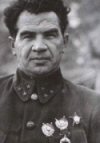






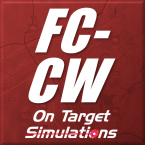

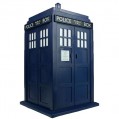


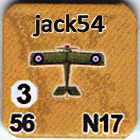
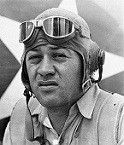
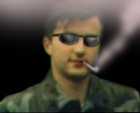
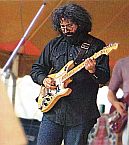


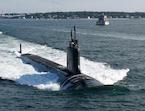

 But the most thing i like is the editor. Now i can build historical Bundeswehr battalions with the perfect Chain of Command.
But the most thing i like is the editor. Now i can build historical Bundeswehr battalions with the perfect Chain of Command. 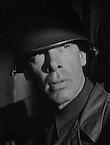
 New Messages
New Messages No New Messages
No New Messages Hot Topic w/ New Messages
Hot Topic w/ New Messages Hot Topic w/o New Messages
Hot Topic w/o New Messages Locked w/ New Messages
Locked w/ New Messages Locked w/o New Messages
Locked w/o New Messages Post New Thread
Post New Thread